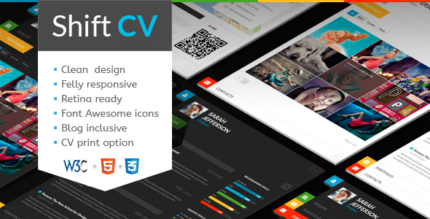Version :
Latest Version


Rs1,494.00 Original price was: Rs1,494.00.Rs425.00Current price is: Rs425.00.
pangaea/
├── index.html
├── about.html
├── services.html
├── portfolio.html
├── blog.html
├── contact.html
├── assets/
│ ├── css/
│ ├── js/
│ └── images/
└── README.md
<!DOCTYPE html>
<html lang="en">
<head>
<meta charset="UTF-8">
<meta name="viewport" content="width=device-width, initial-scale=1.0">
<title>Pangaea - Multi-Purpose Template</title>
<link rel="stylesheet" href="assets/css/styles.css">
<link rel="stylesheet" href="https://cdnjs.cloudflare.com/ajax/libs/font-awesome/5.15.3/css/all.min.css">
</head>
<body>
<!-- Header -->
<header>
<nav>
<div class="logo">Pangaea</div>
<ul>
<li><a href="index.html">Home</a></li>
<li><a href="about.html">About</a></li>
<li><a href="services.html">Services</a></li>
<li><a href="portfolio.html">Portfolio</a></li>
<li><a href="blog.html">Blog</a></li>
<li><a href="contact.html">Contact</a></li>
</ul>
</nav>
</header>
<!-- Hero Section -->
<section class="hero">
<div class="hero-content">
<h1>Welcome to Pangaea</h1>
<p>Your all-in-one solution for web design and development.</p>
<a href="portfolio.html" class="cta-button">Explore Our Work</a>
</div>
</section>
<!-- Services Section -->
<section class="services">
<h2>Our Services</h2>
<div class="service-cards">
<div class="service-card">
<i class="fas fa-laptop-code"></i>
<h3>Web Development</h3>
<p>Building responsive and scalable websites.</p>
</div>
<div class="service-card">
<i class="fas fa-pencil-ruler"></i>
<h3>UI/UX Design</h3>
<p>Creating intuitive user experiences.</p>
</div>
<div class="service-card">
<i class="fas fa-bullhorn"></i>
<h3>Digital Marketing</h3>
<p>Boosting your online presence and visibility.</p>
</div>
</div>
</section>
<!-- Portfolio Section -->
<section class="portfolio">
<h2>Our Portfolio</h2>
<div class="portfolio-gallery">
<div class="portfolio-item">
<img src="assets/images/project1.jpg" alt="Project 1">
<h3>Project Title 1</h3>
</div>
<div class="portfolio-item">
<img src="assets/images/project2.jpg" alt="Project 2">
<h3>Project Title 2</h3>
</div>
<div class="portfolio-item">
<img src="assets/images/project3.jpg" alt="Project 3">
<h3>Project Title 3</h3>
</div>
</div>
</section>
<!-- Footer -->
<footer>
<p>© 2023 Pangaea. All rights reserved.</p>
<div class="social-media">
<a href="#"><i class="fab fa-facebook-f"></i></a>
<a href="#"><i class="fab fa-twitter"></i></a>
<a href="#"><i class="fab fa-instagram"></i></a>
</div>
</footer>
<script src="assets/js/scripts.js"></script>
</body>
</html>
body {
font-family: Arial, sans-serif;
margin: 0;
padding: 0;
color: #333;
}
header {
background: #4A90E2;
color: white;
padding: 15px 20px;
}
nav {
display: flex;
justify-content: space-between;
align-items: center;
}
nav ul {
list-style-type: none;
display: flex;
margin: 0;
padding: 0;
}
nav ul li {
margin-left: 20px;
}
nav a {
color: white;
text-decoration: none;
}
.hero {
background: url('assets/images/hero-bg.jpg') no-repeat center center/cover;
text-align: center;
padding: 100px 20px;
color: white;
}
.cta-button {
background: #FF5733;
color: white;
padding: 10px 20px;
border: none;
border-radius: 5px;
text-decoration: none;
}
section {
padding: 50px 20px;
text-align: center;
}
.service-cards, .portfolio-gallery {
display: flex;
justify-content: space-around;
flex-wrap: wrap;
}
.service-card, .portfolio-item {
background: #f9f9f9;
border-radius: 8px;
padding: 20px;
margin: 10px;
width: 300px;
}
footer {
background: #333;
color: white;
text-align: center;
padding: 20px;
}
.social-media a {
margin: 0 10px;
color: white;
}
// Placeholder for future JavaScript functionalities
console.log('Pangaea template loaded.');
<section class="about">
<h2>About Us</h2>
<p>Lorem ipsum dolor sit amet, consectetur adipiscing elit. Aenean commodo ligula eget dolor.</p>
</section>
<section class="services">
<h2>Our Services</h2>
<div class="service-list">
<h3>Web Development</h3>
<p>Details about web development services.</p>
<h3>UI/UX Design</h3>
<p>Details about UI/UX design services.</p>
<h3>SEO Optimization</h3>
<p>Details about SEO services.</p>
</div>
</section>
<section class="portfolio">
<h2>Our Portfolio</h2>
<div class="portfolio-gallery">
<div class="portfolio-item">
<img src="assets/images/project1.jpg" alt="Project 1">
<h3>Project Title 1</h3>
</div>
<div class="portfolio-item">
<img src="assets/images/project2.jpg" alt="Project 2">
<h3>Project Title 2</h3>
</div>
</div>
</section>
<section class="blog">
<h2>Blog</h2>
<div class="blog-posts">
<div class="blog-post">
<h3>Blog Post Title</h3>
<p>Summary of the blog post.</p>
<a href="#" class="read-more">Read More</a>
</div>
</div>
</section>
<section class="contact">
<h2>Contact Us</h2>
<form>
<input type="text" placeholder="Your Name" required>
<input type="email" placeholder="Your Email" required>
<textarea placeholder="Your Message" required></textarea>
<button type="submit" class="cta-button">Send Message</button>
</form>
</section>
1. All digital products are the most recent version, with no possibility of free updates. After payment, you can request an update to the most recent version for 5 days if a new version is released. We free support within 5 days.
2. If a license is required (Excludes WHMCS license , we provide only method not license), please contact us via email or ticket for assistance with activation. Our license is only valid for activation and does not include support.
3. We provide Mobile, PHP script installation services for $19.90 / ₹1700. Please create a backup after installation as we do not support re-installation. For mobile app source code, we do not offer installation services.
4. If you have any questions, please contact us by email [email protected] or create a ticket on this page
5. Please note that any digital products presented on the website do not contain malicious code, viruses or advertising. You will receive the original files from the developers. We do not sell any products that have been downloaded from other websites.
6. The response time can last up to 6 hours.
No account yet?
Create an Account